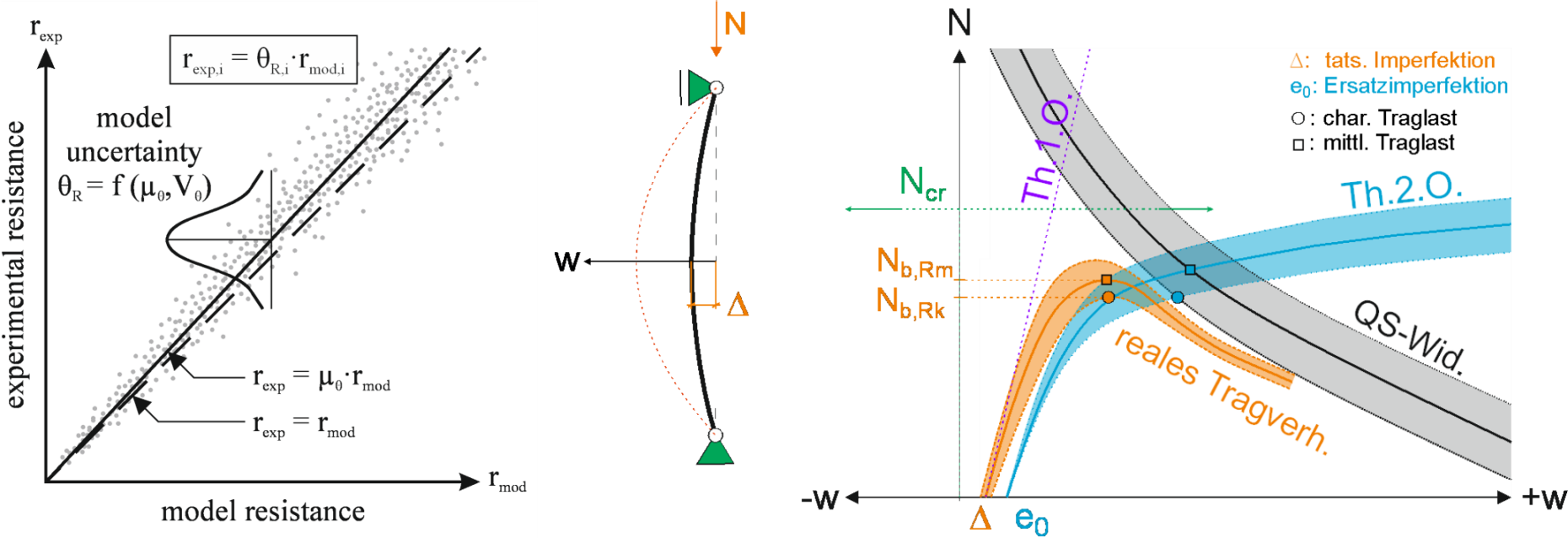Reliability of steel structures designed according to the new Eurocode generation
The European structural standards are based on a semi-probabilistic partial safety concept. With this concept, effects of actions E and resistances R can be determined deterministically. Safety is guaranteed by so-called partial safety factors. These were calibrated to the desired safety level, taking into account the statistical distributions of the influencing parameters. From today's point of view, the procedure used at that time to determine the partial safety factors showed various weaknesses:
- Usage of an inaccurate or no longer up-to-date statistical data basis;
- Investigation of non-representative frame structures;
- Use of resistance models that no longer correspond to the state-of-the-art;
- Neglect of connections and stability aspects.
For this reason, research is currently being carried out to clarify the current safety status of steel structures when using the second Eurocode generation. For this purpose, computationally intensive, fully probabilistic analyses are being carried out, with ETH Zurich focusing on the statistical description of model uncertainties and the consideration of non-linear effects, in particular stability aspects. In this way, in cooperation with the project partners, a decision-making aid for the future procedure and determination of the safety conditions in steel construction is to be created.




